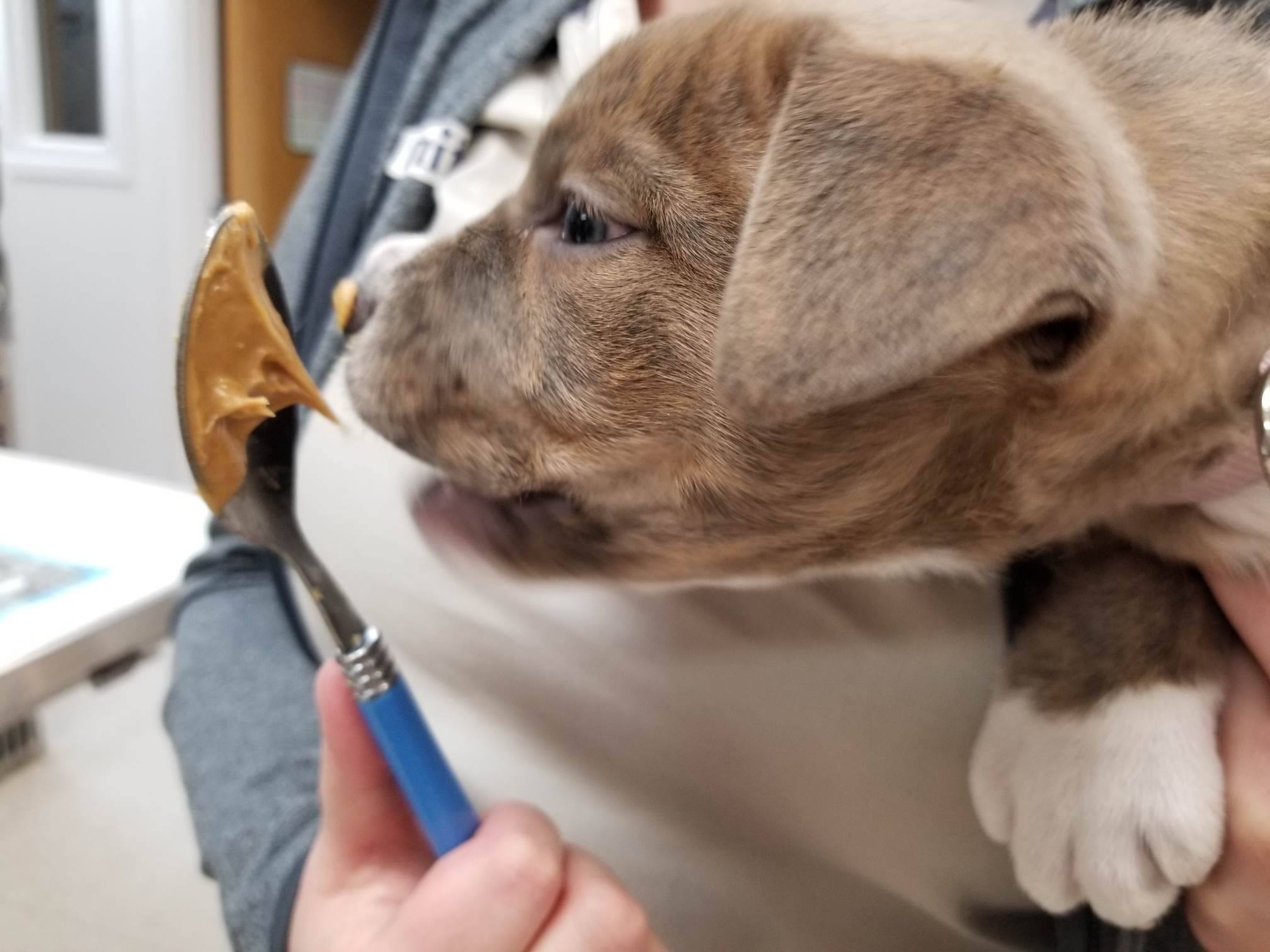
The Puppy Growls
Puppies are definitely a favorite part of this job. We see puppies representing a wide range of personalities; from quiet and shy to bold and fearless. Puppies are full of potential and with consistent work and dedication, ready to mold into your perfect companion – they just need to be shown the way.
Recently our practice has had quite a few new puppy owners state that their puppy growls when they “insert verb here.” We most commonly hear that growling occurs when the puppy is picked up so, unless otherwise stated, we are discussing picking puppies up. However, the training techniques can be applied to other situations as well.
When a young puppy growls, an owner’s reaction can range from putting the puppy down, scolding the puppy, and alpha rolls. Afterwards some owners avoid the issue all together or take it personal. If we look at puppy growling as communication, we may have a better understanding. Growling tells us the dog may be mentally or physically uncomfortable with what we are doing. For a majority of small dogs, being picked up routinely is going to be a fact of life. Rather than punishing a growl, and risk the chance of the puppy hating being picked up its whole life, ask yourself, “How can I help this puppy enjoy being picked up?”
To begin, prepare a big treat for the puppy. Something that he will need to chew or that may stick to the roof of his mouth. It can be peanut butter on a spoon, a treat stick, gooey cheese, or a ball of canned food. Regardless of the treat used, make sure it is something the puppy likes. Have your treat ready in one hand and using your other hand, pick up the puppy by placing your hand under the puppy’s chest. Be sure the puppy has access to the peanut butter spoon or treat while he is being lifted so that he is being rewarded during the process. When the puppy is done chewing, place him back down. As the puppy becomes more relaxed about being picked up, you can change the process by picking up the puppy first then giving the treat immediately after. Soon the puppy will build positive associations with being picked up.
The puppy growls can be easily worked through with equal parts patience, work, and your puppy’s favorite treats. Using food or favorite treats can change your puppy’s negative reaction into a positive experience. For adolescent or adult dogs the same training techniques can be applied. If your dog tries to bite, shows severe anxiety, or suddenly has adverse reactions to a normal routine, you should seek the help of a veterinarian to rule out underlying medical conditions and/or discuss a referral to a Certified Veterinary Behaviorist.




